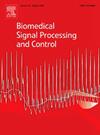Detection of breath cycles in pediatric lung sounds via an object detection-based transfer learning method
IF 4.9
2区 医学
Q1 ENGINEERING, BIOMEDICAL
引用次数: 0
Abstract
Auscultation is critical for assessing the respiratory system in children; however, the lack of pediatric lung sound databases impedes the development of automated analysis tools. This study introduces an object detection-based transfer learning method to accurately predict breath cycles in pediatric lung sounds. We utilized a model based on the YOLOv1 architecture, initially pre-trained on an adult lung sound dataset (HF_Lung_v1) and subsequently fine-tuned on a pediatric dataset (SNUCH_Lung). The input feature was the log Mel spectrogram, which effectively captured the relevant frequency and temporal information. The pre-trained model achieved an F1 score of 0.900 ± 0.003 on the HF_Lung_v1 dataset. After fine-tuning, it reached an F1 score of 0.824 ± 0.009 on the SNUCH_Lung dataset, confirming the efficacy of transfer learning. This model surpassed the performance of a baseline model trained solely on the SNUCH_Lung dataset without transfer learning. We also explored the impact of segment length, width, and various audio feature extraction techniques; the optimal results were obtained with 15 s segments, a 2-second width, and the log Mel spectrogram. The model is promising for clinical applications, such as generating large-scale annotated datasets, visualizing and labeling individual breath cycles, and performing correlation analysis with physiological indicators. Future research will focus on expanding the pediatric lung sound database through auto-labeling techniques and integrating the model into stethoscopes for real-time analysis. This study highlights the potential of object detection-based transfer learning in enhancing the accuracy of breath cycle prediction in pediatric lung sounds and advancing pediatric respiratory sound analysis tools.
通过基于对象检测的迁移学习方法检测小儿肺音的呼吸周期
听诊是评估儿童呼吸系统的关键;然而,儿童肺声数据库的缺乏阻碍了自动化分析工具的发展。本研究介绍一种基于目标检测的迁移学习方法,以准确预测小儿肺音的呼吸周期。我们使用基于YOLOv1架构的模型,最初在成人肺音数据集(HF_Lung_v1)上进行预训练,随后在儿科数据集(SNUCH_Lung)上进行微调。输入特征为对数梅尔谱图,有效捕获了相关的频率和时间信息。预训练模型在HF_Lung_v1数据集上的F1得分为0.900±0.003。经过微调后,在SNUCH_Lung数据集上的F1得分为0.824±0.009,证实了迁移学习的有效性。该模型的性能超过了在没有迁移学习的情况下仅在SNUCH_Lung数据集上训练的基线模型。我们还探讨了片段长度、宽度和各种音频特征提取技术的影响;以15 s的片段、2秒的宽度和对数梅尔谱图获得最佳结果。该模型有望用于临床应用,例如生成大规模注释数据集,可视化和标记个体呼吸周期,以及与生理指标进行相关性分析。未来的研究将集中于通过自动标记技术扩展儿童肺音数据库,并将模型集成到听诊器中进行实时分析。本研究强调了基于目标检测的迁移学习在提高儿科肺音呼吸周期预测准确性和推进儿科呼吸音分析工具方面的潜力。
本文章由计算机程序翻译,如有差异,请以英文原文为准。
求助全文
约1分钟内获得全文
求助全文
来源期刊

Biomedical Signal Processing and Control
工程技术-工程:生物医学
CiteScore
9.80
自引率
13.70%
发文量
822
审稿时长
4 months
期刊介绍:
Biomedical Signal Processing and Control aims to provide a cross-disciplinary international forum for the interchange of information on research in the measurement and analysis of signals and images in clinical medicine and the biological sciences. Emphasis is placed on contributions dealing with the practical, applications-led research on the use of methods and devices in clinical diagnosis, patient monitoring and management.
Biomedical Signal Processing and Control reflects the main areas in which these methods are being used and developed at the interface of both engineering and clinical science. The scope of the journal is defined to include relevant review papers, technical notes, short communications and letters. Tutorial papers and special issues will also be published.
 求助内容:
求助内容: 应助结果提醒方式:
应助结果提醒方式:


